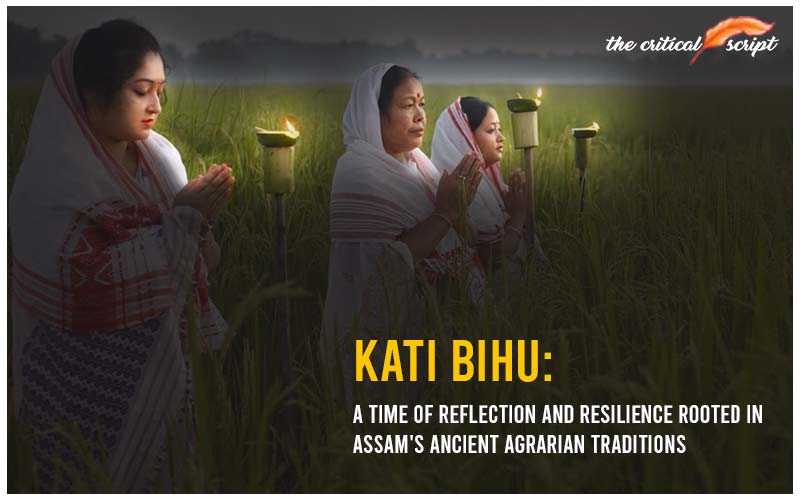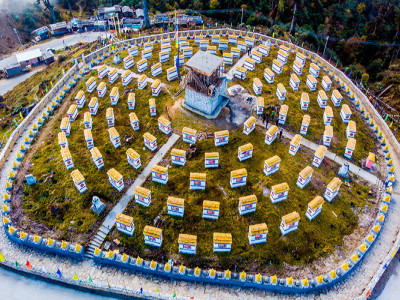
Kati Bihu: A Time of Reflection and Resilience Rooted in Assam's Ancient Agrarian Traditions
The origins of Bihu can be traced back to various Bodo-Kachari communities and their ancient agricultural practices. The word "Bihu" itself is derived from the Deori word Bisu, which means "excessive joy." This term reflects the celebratory nature of these festivals, which were marked by dancing, singing, and other forms of communal joy. The original forms of Bihu continue to thrive among communities like the Chutias, Sonowal Kacharis, Thengal Kacharis, and Deoris, collectively known as the Sadiyal Kacharis. These groups were historically associated with the Kingdom of Sadiya, a prominent center of Assamese culture.
Other Bodo-Kachari groups, including the Boros, Dimasas, Rabhas, and Tiwas, have also celebrated Bihu since ancient times, with variations unique to their cultures. The Boros, for instance, celebrate a version of Bihu called Baisagu, while the Dimasas, Tiwas, and Rabhas observe it as Bushu or Bushu Dima, Pisu, and Dumsi, respectively. These versions of the festival maintain the shared essence of marking seasonal transitions and agricultural cycles, though they may differ in customs and names across communities.
Historical Origins of Kati Bihu
Kati Bihu, or Kongali Bihu, reflects these shared cultural roots but is distinct in its somberness compared to the more joyous Rongali and Bhogali Bihus. Celebrated during the month of Kati (or Kartik in the Hindu calendar), Kati Bihu marks a time of anticipation, when crops are still in the field, not yet ready for harvest. This time is often characterized by scarcity and caution among farming communities, which has led to the festival’s name Kongali, meaning "poor," contrasting with the more abundant celebrations of other Bihus.
Rituals of Kati Bihu
The cultural and historical practices associated with Kati Bihu are rooted in ancient Assamese customs, encompassing unique ordinances that align with the agricultural cycle:
Akash Banti (Sky Lamps)
Lighting lamps on tall bamboo poles, known as Akash Banti, is a practice believed to ward off evil spirits and protect crops from pests. This ritual also guides positive energies to the fields, reflecting the communities' ancient understanding of protection and renewal.
Worship of the Tulsi Plant
Revered in Hindu tradition, the Tulsi (holy basil) plant symbolizes protection and resilience. Worshiping Tulsi during Kati Bihu is seen as a ritual that safeguards families and crops, promoting an environment of spiritual and agricultural purity.
Offering Rice and Other Simple Rituals
In these communities, rice offerings to deities express gratitude and hope for a successful harvest, underscoring the significance of rice as a symbol of sustenance and survival in Assamese society.
Conservation and Frugality
Unlike the more festive Bihus, Kati Bihu is marked by frugality, reflecting a historical awareness of conserving resources during times of scarcity, and promoting resilience in agricultural communities.
Kati Bihu, while less jubilant than Rongali or Bhogali Bihu, is deeply connected to the region's historical practices and serves as a powerful cultural symbol. It captures the resilience, humility, and spiritual depth of Assamese agrarian society, connecting ancient traditions of the Bodo-Kachari groups with the cyclical rhythms of nature and farming.
Disclaimer: The opinions expressed in this article are those of the author's. They do not purport to reflect the opinions or views of The Critical Script or its editor.

Newsletter!!!
Subscribe to our weekly Newsletter and stay tuned.

















Related Comments